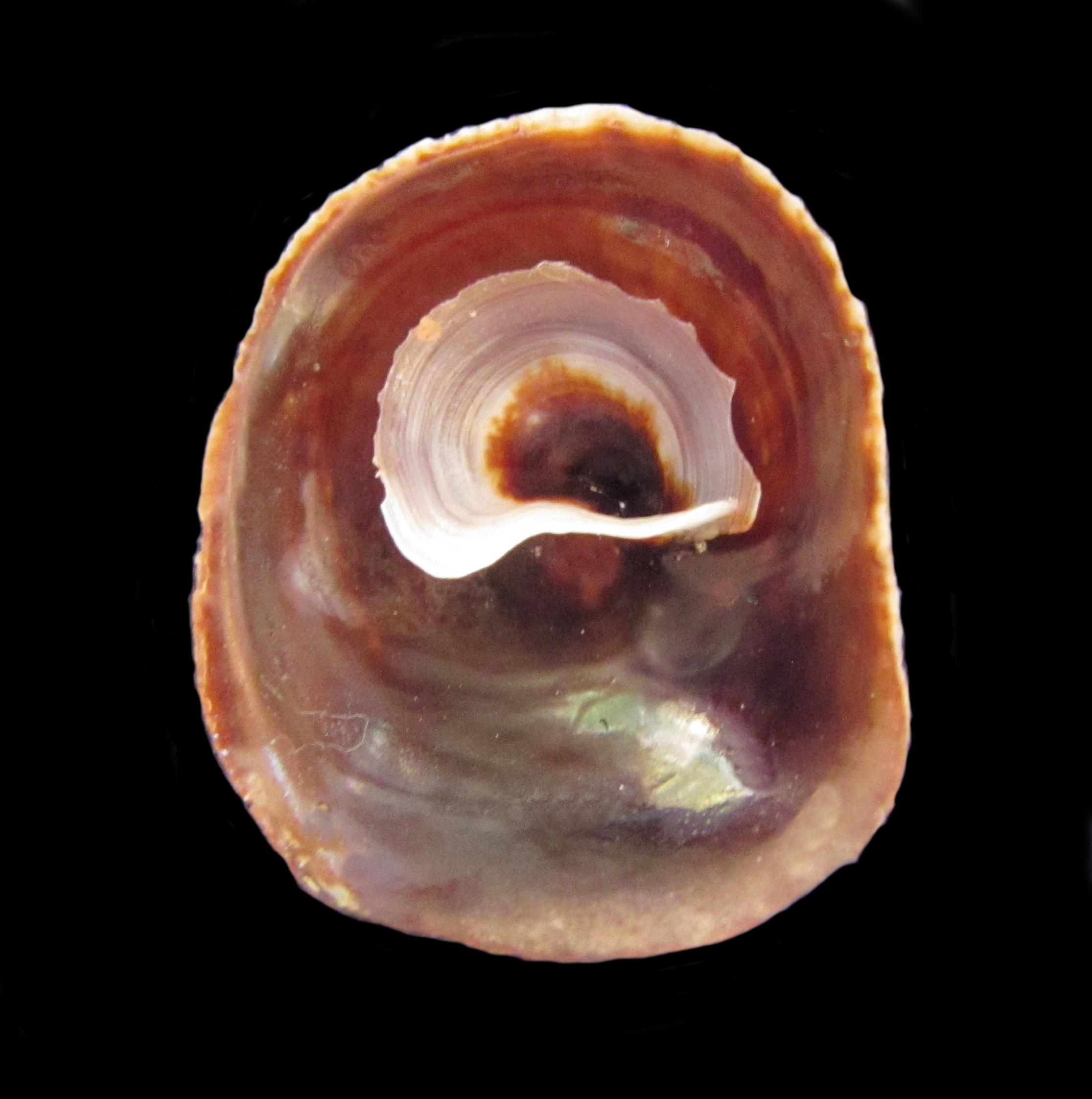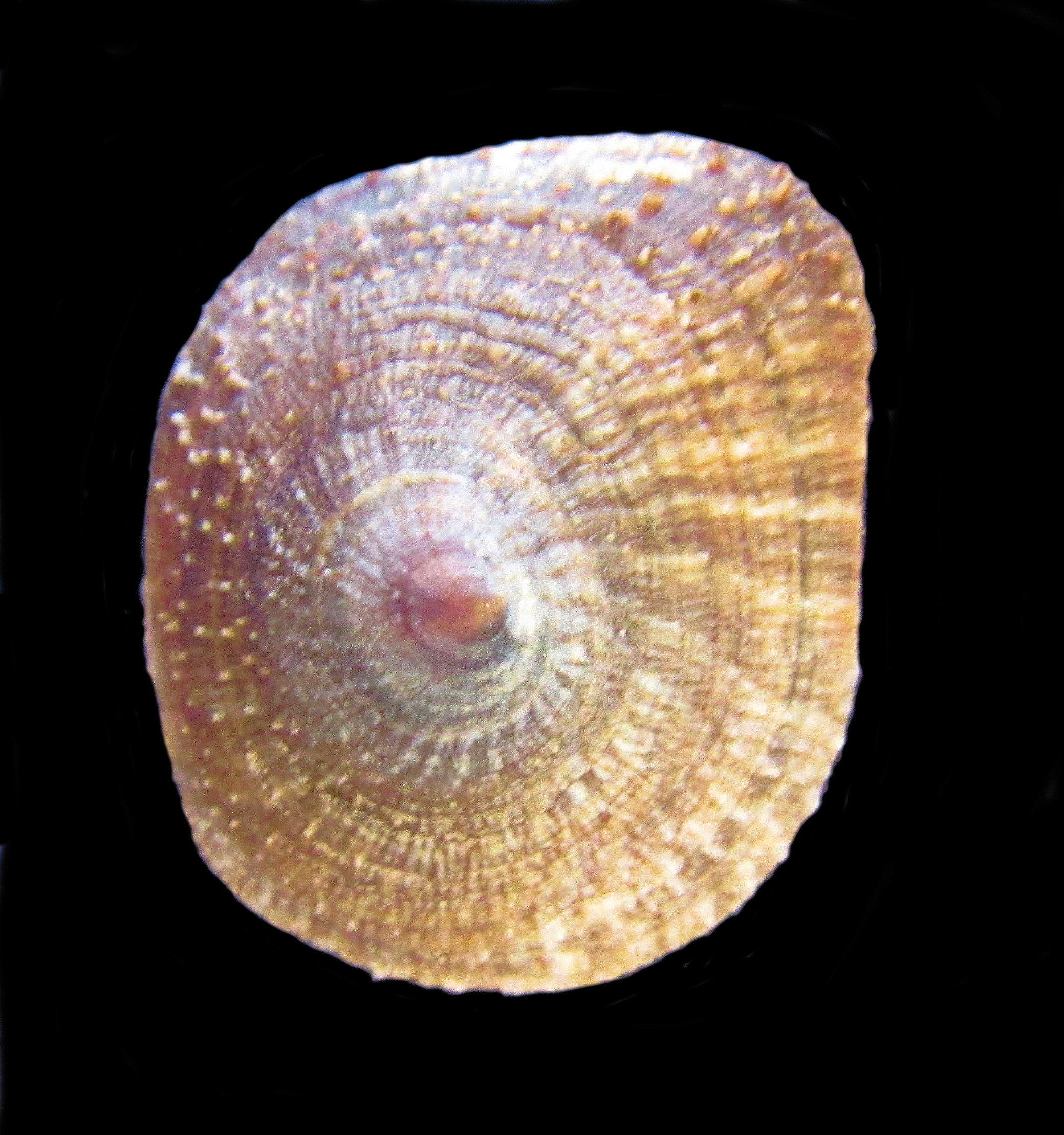Masked Cup-and-Saucer Shell, Crucibulum personatum

 Masked Cup-and-Saucer Shell, Crucibulum personatum. Shell collected along the shore of Loreto, Baja California Sur, October 2019. Size: 3.5 cm (1.4 inches) x 2.9 cm (1.1 inches). Collection, photograph and identification courtesy of Bob Hillis, Ivins, Utah.
Masked Cup-and-Saucer Shell, Crucibulum personatum. Shell collected along the shore of Loreto, Baja California Sur, October 2019. Size: 3.5 cm (1.4 inches) x 2.9 cm (1.1 inches). Collection, photograph and identification courtesy of Bob Hillis, Ivins, Utah.
Phylogeny: The Masked Cup-and-Saucer Shell, Crucibulum personatum (Keen, 1958), is a gastropod mollusk that is a member of the Calyptraeidae Family of Cup-and-Saucer and Slipper Limpet Shells. The genus Crucibulum is one of eleven genera in this family, and there are twenty-one species in this genus. They are known in Mexico as Picacho.
Description: The Masked Cup-and-Saucer Shell has a wide, irregular, oval profile with the shape being determined by the contour of their attachment point. Their apex is moderately high and recurved. They are marked by radial rays and concentric ridges, and may have fine nodes on the exterior. The margin of the shell is not serrated. The septum (internal cup) is flattened and not attached at the margin. The external color varies and may be brown, gray, reddish-brown or white. The interior of the cup is white, often with a dark center. Masked Cup-and-Saucer Shells reach a maximum of 3.5 cm (1.4 inches) in diameter.
Habitat and Distribution: Masked Cup-and-Saucer Shells are found attached to rocks and shells in the intertidal zone, and at depths up to 50 m (165 feet). They are a subtropical to tropical Eastern Pacific species that are found in Mexican waters of the Pacific Ocean along the coast of the mainland south to Guatemala. They are found throughout the Sea of Cortez. They have not been documented along the west coast of the Baja Peninsula.
Ecology and Behavior: Masked Cup-and-Saucer Shells are a poorly studied and understood species. There is very limited documentation of their diet, predation, reproduction or ecosystem interactions. Other species in Family Calyptraeidae are either suspension feeders that filter plankton from the water with their gills or depositional feeders that eat detritus. They are protandrous hermaphrodites, meaning they change sex from male to female during their lives. They reproduce sexually, with internal fertilization. There is no mention in the available literature of them engaging in any types of parasitic, commensal, or symbiotic relationships. From a conservation perspective they have not been formally evaluated however they are fairly common with a relatively wide distribution and should be consider to be of Least Concern.
Synonyms: None